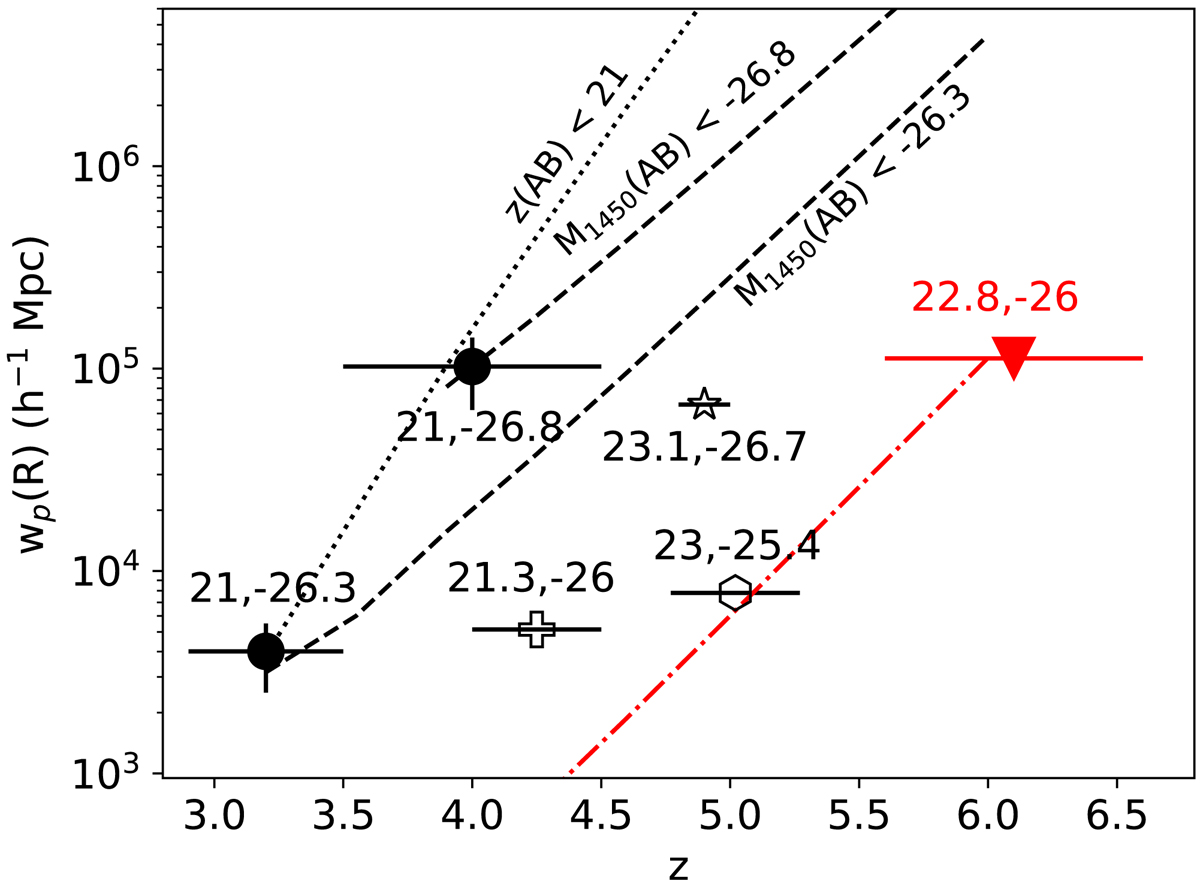Fig. 3.

Download original image
Our upper limit (red triangle) on the projected correlation function of z ∼ 6 QSOs, as derived from the GROND observations. The two filled circles are the corresponding findings by Shen et al. (2010) for 7 and 8 pairs, respectively, modified for the different luminosity function (and cosmology) used over time, and adapted to our search scale of 0.1–3.3 h−1 Mpc according to the −2 power-law scale dependence. Open symbols indicate the serendipitous discoveries from Schneider et al. (2000), Djorgovski et al. (2003), and McGreer et al. (2016), also extrapolated to our search scale. The horizontal error bars show the corresponding redshift range of the studies. The labels at the data points report the limiting i-/z-band AB magnitude of the search (see Col. 5 of Table 1) and the corresponding absolute M1450(AB) limiting magnitude. The two black dashed lines depict wp(R) for the same rate of 7 and 8 pairs, as in Shen et al. (2010), extrapolated to higher redshift with their same M1450(AB), and unchanged luminosity function, suggesting higher wp(R) at higher redshift. Similarly, the dotted line shows the extrapolation for the case of constant limiting z-band magnitude. The red line depicts the backwards extrapolation of our upper limit to lower redshifts, at our M1450(AB) < −26 mag sensitivity, demonstrating the mismatch with respect to the findings at lower redshift. All the lines are computed via integration over the luminosity function of Shen et al. (2020) in redshift steps of 0.25, and proper redshift-dependent transformation between observed z′ and absolute magnitudes.
Current usage metrics show cumulative count of Article Views (full-text article views including HTML views, PDF and ePub downloads, according to the available data) and Abstracts Views on Vision4Press platform.
Data correspond to usage on the plateform after 2015. The current usage metrics is available 48-96 hours after online publication and is updated daily on week days.
Initial download of the metrics may take a while.


